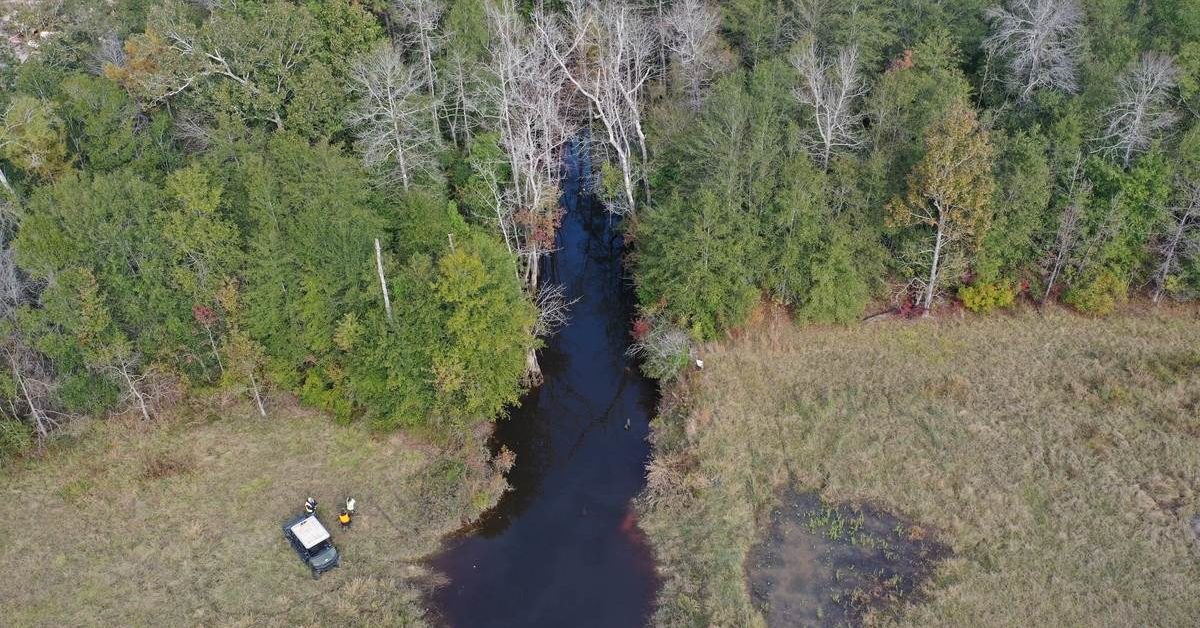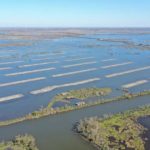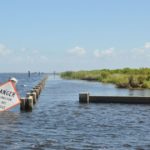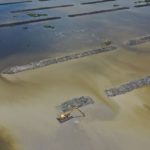Wetlands are crucial to healthy ecosystems and healthy economies. They also help protect our communities from storms and harsh weather. With so many of the US’s original wetlands already drained or filled and converted for farming or building, protecting our existing wetlands is extremely important.
Two of the tools we use to do this are wetland delineation and jurisdictional determination. In this article, we’ll discuss the purpose of wetland delineations and how they’re decided. We’ll also look at how wetland delineations are impacted by jurisdictional determinations and for how long delineations are valid.
 via Pixabay
via Pixabay
Who Performs Wetland Delineations?
Because wetlands are a threatened ecosystem, they’re protected under the United State’s Clean Water Act. In order to protect wetlands, property owners have to get permits to convert any land that contains wetlands.
In order to get a permit, the area that contains wetlands first has to be identified and have its borders specified. This is known as delineation. Permits in some states can come with a fee of up to $2,000. Routine agricultural activities like plowing and seeding, minor drainage, and farm road maintenance or construction are usually exempt from regulation under the Clean Water Act.
Delineations have to be conducted according to the Environmental Laboratory’s Corps of Engineers Wetlands Delineation Manual. Landowners have the ultimate responsibility for identifying wetlands and figuring out their borders, but their conclusions have to be approved by the Environmental Protection Agency (EPA) or US Army Corps of Engineers (USACE).
There are two types of delineation approaches: routine and comprehensive. Most delineations follow the routine approach. The comprehensive approach is more for complex wetlands or situations with lawsuits involved.
Property owners who want to build or farm on land that might contain wetlands usually hire an environmental consulting agency to analyze their land and create a final report to submit to the EPA, USACE, and appropriate local agencies as well.
The consulting agency will research sources like the US Fish and Wildlife National Wetland Inventory or the United States Department of Agriculture Web Soil Survey database to see if there’s any existing information about the area. Then the agency will carry out in-depth field studies and soil testing. They will mark the boundaries of the wetlands by conducting transects and then walk the perimeter of each wetland to place flags as needed.
Vegetation, hydrology, and soil conditions in the area are the three main things that have to be consistent with wetlands for the area to be identified as wetlands. Delineations are easier when they’re done during the growing season because there is more vegetation to study.
After researching and carrying out their own investigation of the land, the consulting agency also has to figure out and report the wetland’s functions and value. This whole process usually takes about one to two weeks to finish.
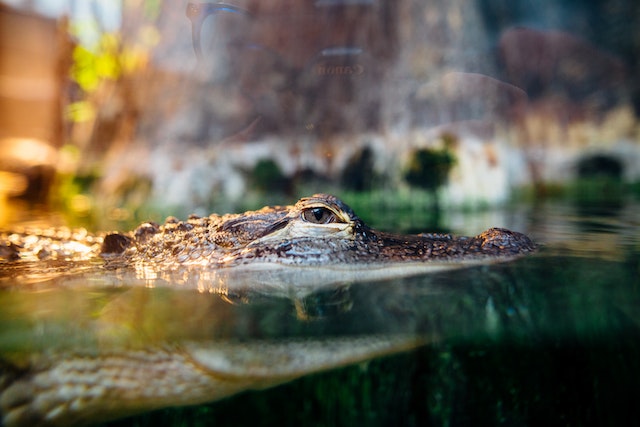
via Pexels
What is a Jurisdictional Determination?
A jurisdictional determination is when the delineation of wetlands reported by landowners (or agencies hired by them) is reviewed and it’s decided whether or not they are areas that are regulated by the USACE.
There are three potential findings of a jurisdictional determination. The land could be found to contain either regulated wetlands, isolated wetlands, or no wetlands at all. We’ve explained it more below.
- Regulated wetlands found: the agency was able to prove that standard characteristics of wetlands existed in the area and the location falls within the jurisdiction of the USACE.
- Isolated wetlands found: wetlands were found in the area but aren’t regulated by the USACE and might be regulated by local agencies.
- No wetlands found: the consulting agency couldn’t prove that standard characteristics of wetlands existed in the area. This land isn’t under USACE jurisdiction.
Jurisdictional determinations have to be written and issued by the USACE. A wetland delineation report is broken down into three sections: methods, results, and conclusions. Below is a list of specific things that should be included in the report
- Location maps
- Layout of the proposed boundaries using aerial photos, topographic maps, soil surveys, etc
- The site’s coordinates based on a standard coordinate system
- Property lines that illustrate the existing land features
- Photos of aquatic resources
- Current land use and a brief history of land use if known (e.g. agricultural, industrial, residential, etc.)
- Vegetation on and next to the area
- Existing and proposed structures with measurements
- Location, dimensions, and type of sewage or septic systems
- Location and dimensions of drainage ditches and berms
It could take several months to get the jurisdictional determination results from the USACE. If you don’t agree with the decision, you can appeal it through a federal district court before filing for a permit.
After you get the decision from the USACE, it could still take several more weeks to get your permits. From the start of the delineation process through the jurisdictional determination and permitting, the whole process usually takes several months, so make sure you start way ahead of the time you’re planning to start your project.
How Does a Jurisdictional Determination Affect a Wetland Delineation?
If a jurisdictional determination finds that an area is, in fact, a wetland that falls under the jurisdiction of the USACE, the decision is final unless you appeal it in court. If it’s decided that the land falls under USACE jurisdiction, the land is then regulated by CWA 404 and the property owner has to get a permit to make any changes to the land.
Wetland mitigation prevents wetland loss by restoring or replacing them. There are three types of wetland mitigation: restoration, enhancement, and creation.
Restoration rehabilitates an area of wetlands to restore it to its historical function, while enhancement improves the function of an existing wetland (often done by changing the elevation of certain areas), and creation builds man-made wetlands in new areas.
Wetland mitigation is complex and expensive. Making sure you follow the delineation process correctly will help you avoid wasting time and money. Land that isn’t under USACE jurisdiction can be developed without wetland permits or mitigation.
How Long Do Wetland Delineation Permits Last?
A wetland delineation permit usually lasts for five years. If new information about the area is learned during that five years, you might have to revise or update your original permit.
If you were to get a permit that lasts for longer than five years, the AJD won’t need to be renewed until the permit expires. You can also file for an extension before your permit expires. If it’s approved, the original AJD will remain in effect for as long as the extension does.
Because a delineation permit only lasts five years, you shouldn’t wait too long after you get it to start your project. If it expires before you start your project, you’ll have to do the whole process over again.
What Happens When the Wetland Delineation Expires?
If you have a delineation that’s about to expire, you can ask for an extension from the USACE. If you get an extension, you won’t have to get a new delineation until the extension is over.
If you forget to get an extension or your request for one is denied, you’ll have to get a new delineation to see if there have been any changes.
Final Thoughts
If you have wetlands on your land and you’re considering making some changes, you’ll have to get a wetlands delineation to get a jurisdictional determination to get a permit. It can be a little overwhelming to understand (much less carry out!) the whole process.
The environmental specialists at Fenstermaker can help you through the process and work with the appropriate agencies so that you can carry on with your project. Contact us today to learn more about our environmental consulting services.
